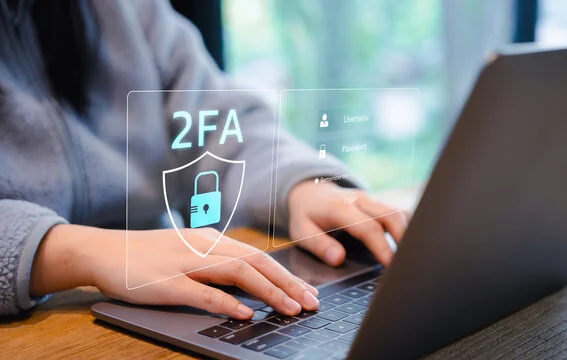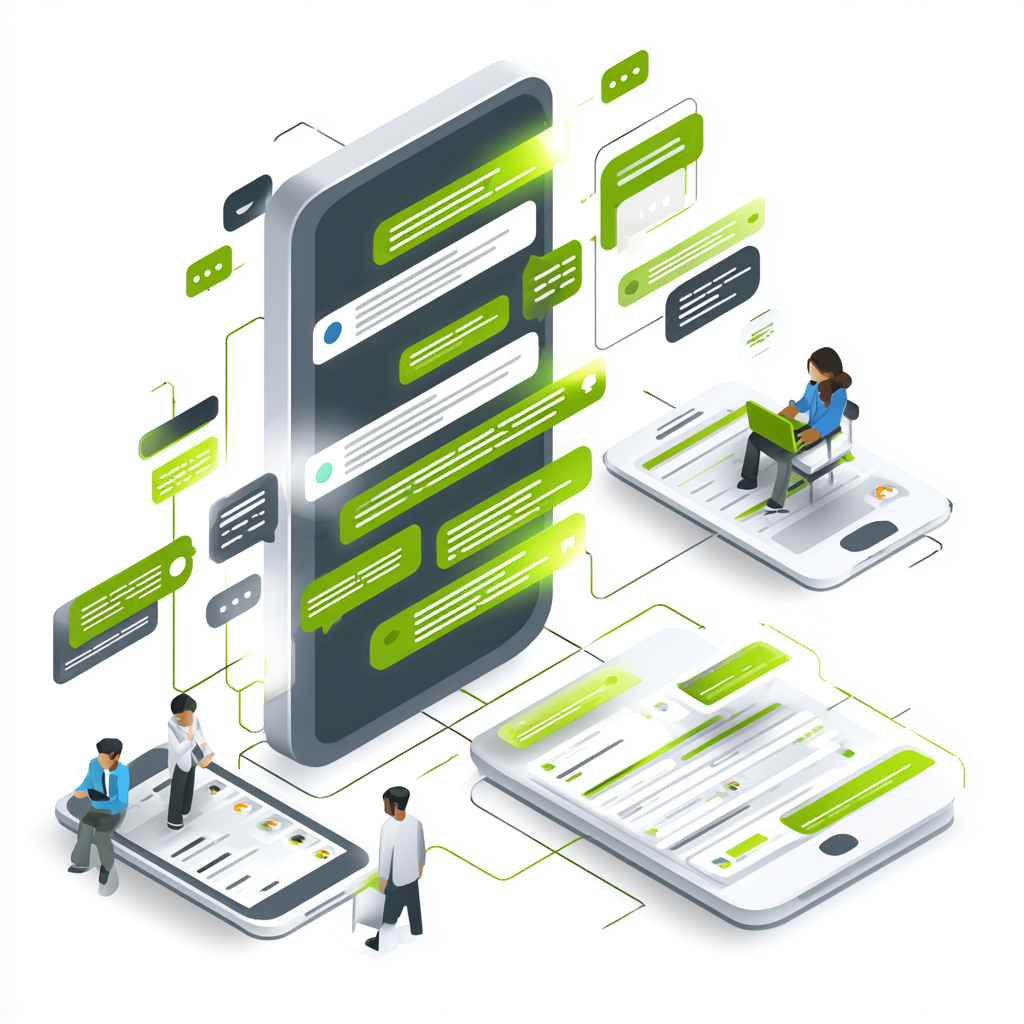Designing user authentication flows is essential to ensuring that only the right people access an app. Verification methods have become more crucial with increased data breaches and security challenges.
One-time passwords (OTPs) have emerged as a reliable way to enhance security by adding an extra layer of protection beyond traditional passwords.
Authentication confirms a user’s identity, while authorization determines what actions they can take once logged in. This article will explore creating effective user authentication flows using OTPs to strengthen security. First, we will look at the roles of authentication and authorization in protecting data and ensuring safe access to applications.
What are user authentication flows?
A user authentication flow is the process through which a user verifies their identity to gain access to a platform. This typically involves entering a password or code. With OTPs, the process becomes more secure by adding a second layer of verification.
An adequate authentication flow guides the user through each step seamlessly. It ensures that security measures do not interfere with the user experience while protecting sensitive data.
How authorization works
Understanding authorization in user access, while user authentication confirms identity, the next crucial step is ensuring users have the appropriate access to resources, known as authorization.
This helps prevent unauthorized access to sensitive data, granting users only what they need. Authorization methods include:
- Role-based access control (RBAC): Users are assigned roles with specific permissions, such as admin or member.
- Policy-based access control (PBAC): Dynamically grants access based on policies related to roles, tasks, and requirements.
- Attribute-based access control (ABAC): Uses attributes like job title or location to determine access.
- Access control lists (ACLs): Set individual permissions, like selecting app permissions on a phone.
Integrating strong authorization mechanisms alongside OTPs ensures that users can prove who they are and have the right level of access, enhancing overall security.
Why OTP is ideal for authentication flows
OTP authentication is ideal for several reasons:
- Enhanced security: Since OTPs are unique and expire quickly, they provide more protection than traditional passwords.
- Better user experience: OTPs eliminate the need for users to remember complex passwords. They are also easy to use and understand.
- Protection against common attacks: OTPs help prevent attacks like credential stuffing, where attackers use stolen username and password combinations to gain unauthorized access.
OTPs are often generated using algorithms such as TOTP (Time-based One-Time Password) or HOTP (HMAC-based One-Time Password), which ensure that the codes are time-sensitive and unique.
Steps to design an effective authentication flow with OTPs
Designing an adequate OTP-based authentication flow involves careful planning and user-centric design. Here are the key steps to follow:
Plan the user journey
Start by mapping the user’s journey from login to OTP request and validation. Consider these questions when planning the journey:
- Where does the user log in? Is it through a mobile app, a website, or both?
- What happens after the user enters their initial credentials? Will the OTP be requested automatically, or will the user need to request it?
- How will the OTP be delivered? Options include SMS, email, or app-based notifications.
Mapping out this journey ensures you understand how users move through the process and help you create a seamless experience.
Create a simple and clear flow
A simple and clear flow helps users move through the authentication process without confusion. For example:
- Step 1: The user enters their username and password.
- Step 2: The system prompts users to check their email or phone for the OTP.
- Step 3: The user enters the OTP to gain access.
Clear instructions should be provided at each stage. For example, a message like “Enter the code sent to your phone” helps users know what to do next.
Limit the number of steps
Keep the number of steps in the flow as low as possible. A complicated process can frustrate users and lead them to abandon the login attempt. The goal is to strike a balance between security and convenience.
For example, limiting the process to three steps: enter credentials, receive OTP, and enter OTP keeps it simple. Key points to remember: Plan the user journey, keep steps minimal, and maintain clarity throughout the process
Elements of a strong OTP-based authentication flow
A well-designed OTP-based authentication flow should include these elements:
- OTP generation: The system should generate a unique, time-sensitive OTP for every authentication request. This ensures it will not work for future logins even if someone gains access to an OTP.
- OTP delivery: The OTP should be sent to the user in their preferred way, such as SMS, email, or app notification. Providing delivery options ensures users can choose the method that suits them best.
- User input: Users should enter the OTP into the platform. It’s essential to provide clear feedback if something goes wrong, such as “The OTP you entered is incorrect. Please try again.”
- Validation: The system must validate the OTP to check if it is correct and has not expired. The user can proceed if the OTP is valid; an error message should appear.
- Fallback options: It is good practice to provide users with a fallback option in case the OTP is not received. Backup codes, alternative verification methods, or a way to request a new OTP can improve the user experience.
User experience best practices in authentication flows
Ensuring a positive user experience is key when designing OTP authentication flows. Here are some best practices:
Provide clear instructions
Ensure users know what to do at each stage of the process. Simple instructions like “Enter the code you received via SMS” can reduce confusion.
Set a reasonable expiration time
OTPs should expire after a set time to minimize security risks. However, the expiration period should be long enough for users to enter the OTP without stress. A typical expiration time is 5 minutes, which balances security and user convenience.
Offer multiple delivery options
Not all users prefer the same delivery method. Some prefer SMS, while others want to receive the OTP via email or an app notification. Providing these options ensures that users can choose what works best for them.
Allow easy OTP recovery
If a user misses the OTP or it expires, make it easy for them to request a new one. This ensures that users stay satisfied and continue the process if they encounter an issue.
Security features to incorporate into your OTP authentication flow
Security should be a top priority when designing OTP flows. Here are important features to include:
Set OTP expiry times
OTPs should have a short lifespan to prevent interception or reuse. A 5-minute expiration time is common. Once expired, the OTP should be invalidated, and the user should request a new one.
Limit OTP attempts
Limiting the number of OTP entry attempts helps prevent brute-force attacks. For example, you could allow up to 3 attempts before locking the user out for a set time. This prevents attackers from guessing the OTP.
Use encryption
OTPs should be encrypted during transmission to protect against interception. Encryption protocols such as TLS (Transport Layer Security) help protect OTPs during transmission, ensuring that intercepted data cannot be read.
Monitor for suspicious activity
Incorporating tools that monitor login attempts and flag suspicious behavior can help detect and prevent unauthorized access. For example, if multiple failed OTP attempts occur quickly, the system should alert the user or temporarily block access.
Testing and optimizing your OTP authentication flow
Once you have designed the OTP authentication flow, it is essential to test it thoroughly. Here’s what to focus on:
Test OTP delivery
Test how quickly OTPs are delivered through different channels, such as SMS, email, or app notifications. Delivery delays can frustrate users and reduce the effectiveness of your authentication flow.
Test error handling
Ensure that users receive clear and helpful error messages if something goes wrong. For example, if a user enters an incorrect OTP, a message like “Incorrect OTP. Please try again” is better than a vague “Error” message.
Use analytics
Analytics can provide insights into user behavior during the authentication process. If you notice many users dropping off before entering the OTP, you may need to simplify the process or improve instructions.
Collect feedback
User feedback is valuable for optimizing the authentication flow. Users can tell you if they find the process easy or if there are parts that need improvement. Use this feedback to make necessary adjustments.
Ensuring secure and user-friendly OTP authentication flows
Designing an effective user authentication flow using OTPs is essential for balancing security and user experience. You can create a smooth and secure process by following best practices, integrating essential security features, and continuously testing and optimizing the flow.
An effective OTP authentication flow should be simple, user-friendly, and enough to protect against common security threats. To secure your platform from unauthorized access, prioritize ease of use while ensuring strong protection. A well-designed OTP authentication flow should be secure, user-friendly, and adaptable, balancing ease of use with protection.





